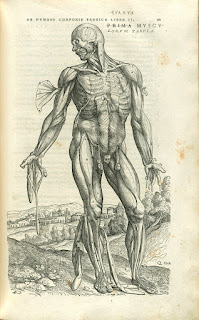Week 6: Biotech + Art
Being a Human Biology and Society Major, I was already fairly familiar with the concept of biotechnology prior to reviewing this week’s material, including some of the bio-art mentioned like the fluorescent rabbit. However, I was not aware of the full extent of the political undercurrent that surrounds this movement. For instance, I did not realize that artists were tackling questions such as what constitutes life through their work (Levy). But, this makes sense as art is a great medium to use to inspire discussion, especially because it gives people a tangible representation of an abstract concept.
 |
| Photo of Alba, the fluorescent rabbit created by Eric Kac in conjunction with French scientists. |
While it is undoubtedly useful to combine biotechnology and art, doing so raises a myriad of political and ethical concerns. Politically speaking, the development of new, living creations could completely shatter our the way society has been set up, particularly with the development of something such as Rinaldo’s work Autopoiesis.
 |
| Rinaldo's Autopoiesis, a mechanical 15 arm robot that changes and adapts based on experiences it "learns". |
Ethically speaking, working with anything living, whether it be DNA or mammals or even creating a robot that mimics human life, raises the question of whether trivial use of these types of genetic engineering mechanisms should be allowed, as well as questions like can someone own a the genetic material of someone or something else.
Despite the potential for political and ethical concerns, biotechnology and art are an important tools for encouraging public participation and pushing the status quo. Even though there are
many concerns over “outlaw” biology and DIY biologists or artists accidentally releasing something like a super virus, most of these concerns are unfounded as your average DIY biologist does not have access to the tools and resources needed for this to occur. Besides, without historical instances of DIY and outlaw biologists pushing the boundaries, some of our most important scientific advances may never have happened.
 |
| Facilities at THELAB, a Los Angeles based DIY biology space open to use for anyone who wishes to become a member. |
Sources:
“Autopoiesis (Web).” Ken Rinaldo, www.kenrinaldo.com/portfolio/autopoiesis/. Accessed 10 May 2017.
“GFP Bunny.” GFP Bunny, www.ekac.org/gfpbunny.html#gfpbunnyanchor. Accessed 10 May 2017.
“Facility.” THELAB, www.thel4b.com/?page_id=49. Accessed 10 May 2017.
Kelty, Chris. “Meanings of Participation: Outlaw Biology?” n.p. Accessed 10 May 2017.
Levy, Ellen. “Defining Life: Artists Challenge Conventional Classifications.” n.p. Accessed May 2017.


Comments
Post a Comment